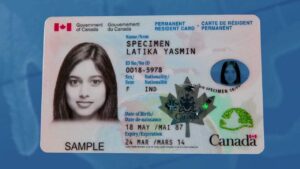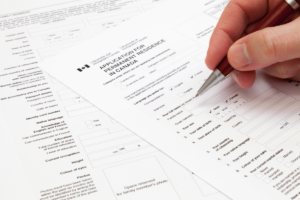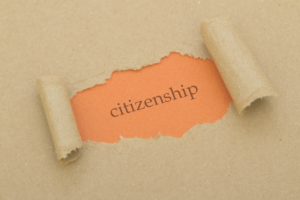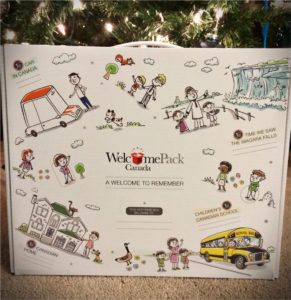I didn’t have the time to blog for a month, but responding to comments and emails that I received kept me going… Today, I thought that it maybe interesting to come out with a post that will describe the preparation that my family made prior to our landing to the City of Peg (Manitoba). A lot of things may have changed since I came in 2009, but I guess the important things that you must bring with you when moving to Canada from your country will still be the same things with what we had then.
As soon as we received our Canadian Immigrant Visa, the first thing that concerned me (of course aside from choosing our flight dates and booking our tickets) is to start preparing and packing the things that we need. Believe me, this is one of the hardest part of our preparation and this really brought a lot of stress to me.
Expect to have so many things in your list – – – that’s a sure thing because you would want to bring everything you think you’ll need. But you have to consider if it is cost effective to bring these stuff with you. And aside from that you have to know what is Canada’s regulations regarding the stuff that you may and may not bring in Canada. A person moving to Canada from another country can bring his/her personal and household goods with him/her without paying duty (a fee that the government charges on some goods when entering Canada). However, you will have to pay duty on items that has not been used. Please note that Canada has strict policy on food, drugs, nicotine and other stuff, find time to review the information for Canadian citizens and permanent residents on the CBSA’s border services website prior to you arrival.  I strongly suggest that you complete the Form B4 (Personal Effects Accounting Document). This is a document where you will list all your personal stuff such as clothes, kitchen utensils, appliances or furniture even your vehicle that you also intend to bring with you to Canada on a later date. If you are able to submit this form you will be able to ship your personal effects to Canada duty free. If the immigration officer fails to ask for your B4 upon your arrival when you enter Canada, make sure that you remind them of this. I apologize if I will not be able to discuss this further because I failed to do this one! I wasn’t able to submit our Form B4 when we arrived… Thus, when my in-laws sent our remaining stuff a few months after, we paid the taxes for the goods that we received and it was not cheap. To know more about sending your personal effects to Canada, I suggest that you visit the Canada Border Services Agency website.
I strongly suggest that you complete the Form B4 (Personal Effects Accounting Document). This is a document where you will list all your personal stuff such as clothes, kitchen utensils, appliances or furniture even your vehicle that you also intend to bring with you to Canada on a later date. If you are able to submit this form you will be able to ship your personal effects to Canada duty free. If the immigration officer fails to ask for your B4 upon your arrival when you enter Canada, make sure that you remind them of this. I apologize if I will not be able to discuss this further because I failed to do this one! I wasn’t able to submit our Form B4 when we arrived… Thus, when my in-laws sent our remaining stuff a few months after, we paid the taxes for the goods that we received and it was not cheap. To know more about sending your personal effects to Canada, I suggest that you visit the Canada Border Services Agency website.
So let me tell you some other tips that may help you in preparing the things that you will bring with you… I do not recommend that you bring appliances or furniture with you aside from the fact that these cost a lot to ship you may not be able to use them. If you are staying with your relatives or friends’ place when you arrive, you can expect that they have the basic appliances that you may need. On the other hand if you will be living in an apartment, most apartments here in Canada have appliances such as stove and oven, refrigerator and if they don’t have ensuit washing machine and dryer, most apartments have coin or prepaid card operated washers and dryers that are normally located in the common area of the building.
Don’t bring too much clothes. Remember that Canada has 4 seasons – Winter, Spring, Summer and Fall. Different season requires you to wear different kinds of clothing. I came from a tropical country and most of the clothes that we brought were wearable on summer season only, since we arrived in spring and we are still in shock of the cold temperature we weren’t able to wear most of the clothes that we brought and ended up buying clothes that are appropriate to the weather. We should have brought other important stuff from the Philippines than our clothes.
Check what the weather is like in the province (of Canada) on the date of your arrival. As I said, Canada has 4 seasons, that means Canada has a wide range of temperature, therefore, you must come prepared.
- If you are arriving to Canada between March to May, it is the spring season, this is the season when the winter snow starts to melt. Therefore, it is still cold, and if you are coming from a tropical country like I do, this season may still be “very cold” for you, so aside from a warm coat you may even need mittens and boots.
- If you are arriving sometime between June to August, lucky you! This is the summer season. Prepare to come with clothing that suits the warm weather.
- If you are coming between September to November, you are witnessing the autumn or the fall season (my favourite season!). Weather at this time of the year is unpredictable, it can be rainy or dry. It is during November when the first snow normally falls (but here in Winnipeg, it could be earlier). You might want to arrive with a coat or a jacket, hat, mittens and boots when you come at this time.
- If you are arriving to Canada in December to February, prepare to see the snow, it’s winter! Please make sure that you have the proper clothing like a very warm coat, thick jacket, mittens, neck warmer, hats and boots to keep yourself warm. This is the season where winds can make temperatures feel even colder (known as the wind-chill).
One of the most important reminder that I would like to share is that you make sure that you bring your important documents with you. Make sure that you do not put these documents in your luggage and it comes handy. There are documents that you must present to the immigration officers when you cross the border, if you are unable to present them, you will not be lowed to enter to Canada. You need to present the following to enter Canada:
- A Canadian immigrant visa (if applicable) and Confirmation of Permanent Residence for each family member traveling with you
- A valid passport or other travel document for each family member traveling with you
- List of all the personal or household items you are bringing with you and list of items that are arriving later and their money value
- Disclosure of Funds – Completed Form E677, Cross-Border Currency or Monetary Instruments Report – Individual. Anyone entering/leaving Canada carrying $10,000 or more, or its equivalent in a foreign currency including any combination of coins, domestic or foreign bank notes, and securities, such as travellers cheques, stocks and bonds must complete the reporting form, sign it, and hand it to the Canadian official at the time you are travelling.
Other important documents that you should bring with you which I recommend to be translated in English (or French) before your arrival to Canada includes:
- Heath Documentation. When your travelling to Canada, ensure that you bring official documents pertaining to the vaccinations you and your family have already had. In Canada, immunization or vaccination records are required for children to enroll in school.
- Birth certificates or baptismal certificates
- Marriage certificates
- Adoption, separation or divorce papers
- School records, diplomas or degrees for each family member traveling with you
- Trade or professional certificates and licences
- Letters of reference from former employers
- Driver’s licence
- Proof of your English Proficiency (including results of CIC_approved 3rd-party test or evidence of completion of secondary or post secondary education in English or French).
I also recommend that you make photocopies of these essential and important documents, in case you lost the originals you still have another copy, but make sure that you do not put your originals and photocopies on the same luggage or box that you are bringing.
Sources:
Government of Canada, Prepare for Life in Canada. Retrieved November 2, 2014.
Canada Border Services Agency, Canadians and Permanent Residents. Retrieved November 13, 2014.












